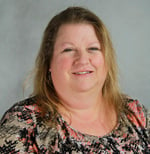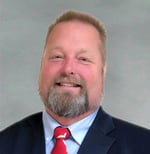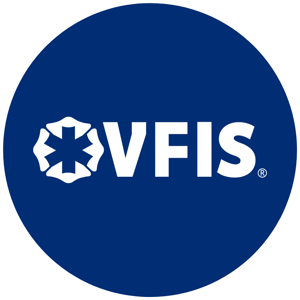Did you know that VFIS has an Education, Training and Consulting (ETC) Department that’s dedicated to helping fire departments, EMS agencies and communication centers address everyday obstacles and unique challenges?
To help you get to know the VFIS ETC team—and, of course, get some helpful training ideas along the way—we’ve asked them each to share one quick tip.
Here’s what they had to say:
1. “Data shows that firefighters are at a greater risk for cancer than the general population. That’s why having a cancer prevention program that addresses decontaminating gear, using dedicated washing/drying equipment, requiring annual physical exams, having clean living quarters and other safety policies is crucial for every fire department.”
Dave Michaels
VP, Education, Training and Consulting
35 Years in the fire/EMS industry
2. “We offer so many training opportunities for emergency responders to take advantage of—and we’re continually adding new courses that you may not be aware of—so I’d encourage you to take time each year to see what opportunities are available and which are the best fit for your organization. For example, we added an EMSVO course in 2019 that solely focuses on EMS vehicle operations for EMS providers—which may be a better fit for your team than our original driver training course depending on your operations.”

Diane Gentzler
Training Assistant
5 Years in the fire service
3. “Mid-level management is often one of the most under-valued training areas—and, in my experience, mid-level managers who are properly trained on an organization’s policies and overall vision have the greatest ability to implement change, promote a positive culture and encourage safety and risk reduction best practices.”

Jake Hoover
Education Specialist
36 Years in the fire/EMS industry
4. “The fire/EMS industry has a high turnover rate for a variety of reasons—and, as a result, less-experienced members often have the opportunity to move into leadership positions. Unfortunately, many stumble as they navigate these roles and others are discouraged by the experience altogether. I believe the most successful ESOs are those who provide education, training, mentorship and other forms of support to the next generation of leaders.”

Justin Eberly
Education Specialist
11 Years in EMS + 5 years in the fire service
5. “While training on hard skills like driving and patient safety are crucial, raising awareness about behavioral and mental health, as well as breaking the stigma around seeking assistance, should also be high-priorities for all ESOs given the level of stress, trauma and danger that come with the job.”

Maria Lichty
ETC and Distance Learning Coordinator
6. “If EMS providers aren’t taking proper care of themselves, how can they appropriately and safely tackle the physical aspects of patient care? The truth is: the overall health and wellness of a provider—including diet, exercise and mental health—is key to having proper technique and safely lifting, moving and caring for patients.”

Nicole Dugan
Education Specialist
25 Years in EMS
7. “Volunteer fire and EMS organizations tend to focus more on operational rather than administrative processes—and, as a result, the organizational structure, management practices and bylaws of many ESOs are out of date. For example, volunteer members are traditionally “voted-in” during a general membership meeting. However, this practice may lead to potential legal problems if the applicant is denied membership due to subjective opinions of the voting members rather than an objective evaluation of the applicant’s knowledge, skills and abilities compared to the job description.”

Rick Gurba
Director, Education, Training and Consulting
40 Years in EMS, 5 years in the fire service + 5 years in 911 telecommunications
8. “Given the landscape of emergency services today—it’s not enough to be a member. You have to be dedicated to safety, focus on situational awareness and follow the established guidelines of your organization in order to not only protect the people in your community, but also yourself and fellow personnel. So, if I could tell every ESO one thing, it would be to live by the words ‘every day is a training day’ and always remember: ‘safety first, never last—have a future not a past’.”

Tim Boel
Education Specialist
45 Years in the fire service, 35 years in law enforcement + 5 years in EMS
9. “There aren’t enough fire departments utilizing SOGs to their fullest potential—or at all. Rather than simply having a binder of papers sitting in a cabinet, guidelines and procedures should be living documents that are reviewed annually, actively taught to members and enforced equally throughout the department.”

Russ Kough
Education Specialist
45 Years in the fire/EMS industry
10.“Most organizations are great at training job specific functions for everyday events—but what about days with added stressors like natural disasters? Continuity of Operations Planning (COOP) can help ensure that your ESO can safely continue to perform your mission and essential functions during a wide range of emergencies.”

Woody Sullivan
Education Specialist
38 Years of fire, EMS and law enforcement experience
We thank you for all that you do for your community and are proud to partner with organizations like yours. If you have a specific education, training or consulting concern—we’d love to talk about your options! Please reach out to us at: csapps@vfis.com or 800.233.1957.
DISCLAIMER
The information contained in this blog post is intended for educational purposes only and is not intended to replace expert advice in connection with the topics presented. Glatfelter specifically disclaims any liability for any act or omission by any person or entity in connection with the preparation, use or implementation of plans, principles, concepts or information contained in this publication.
Glatfelter does not make any representation or warranty, expressed or implied, with respect to the results obtained by the use, adherence or implementation of the material contained in this publication. The implementation of the plans, principles, concepts or materials contained in this publication is not a guarantee that you will achieve a certain desired result. It is strongly recommended that you consult with a professional advisor, architect or other expert prior to the implementation of plans, principles, concepts or materials contained in this publication.
This blog post may contain the content of third parties and links to third party websites. Third party content and websites are owned and operated by an independent party over which Glatfelter has no control. Glatfelter makes no representation, warranty, or guarantee as to the accuracy, completeness, timeliness or reliability of any third party content. References to third party services, processes, products, or other information does not constitute or imply any endorsement, sponsorship or recommendation by Glatfelter, unless expressly stated otherwise.
Related posts
We asked 10 members of our VFIS Team to name one auto-related risk that they believe is underdiscussed in fire and EMS agencies. Here’s what they said.
Most volunteer fire departments rely heavily on POVs, but there are inherent risks you should know.
Establish a Emergency Vehicle Operations Program that includes driver/operator requirements to help ensure your vehicles are in the right hands.










Submit a Comment